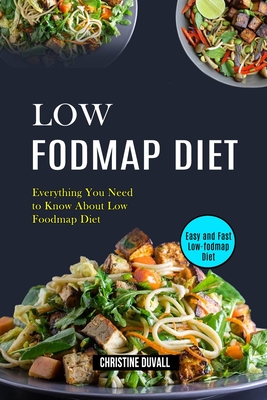
The FODMAP diet is a very restrictive makeshift eating plan. “Carebeauty tells you everything you need to know about the FODMAP diet in the following report:
All you need to know about the FODMAP diet
The FODMAP diet helps identify irritating foods for people with Irritable Bowel Syndrome
This diet is designed to help people with irritable bowel syndrome (IBS) and/or small bowel bacterial overgrowth (SIBO) learn which foods cause problems and which ones reduce symptoms. It is a very restrictive temporary eating plan. A person can not follow them for a long time. It’s just a short discovery process to identify irritating foods for IBS sufferers; Food is a common cause of symptoms such as stomach pain and bloating. So, restricting certain foods can greatly improve these symptoms. This is where the low-FODMAP diet comes in.
What is FODMAP?
The FODMAP diet is a low fermentable carbohydrate diet
FODMAP stands for fermentable oligosaccharides, which are indigestible short-chain carbohydrates that gut bacteria ferment, increasing the production of gases and short-chain fatty acids.
FODMAPs are notorious for triggering gastrointestinal symptoms such as bloating, gas, stomach pain, and altering bowel habits ranging from constipation to diarrhea or a combination of the two. Some foods contain only one type of FODMAP, while others contain several types.
The primary dietary sources of the four groups of FODMAPs are:
Low sugars: wheat, rye, nuts, legumes, artichokes, garlic and onions.
Disaccharides: Products containing lactose such as: milk, yogurt, soft cheese, ice cream, yogurt, condensed milk, and whipped cream.
Monosaccharides: Foods that contain fructose, including fruits such as apples, pears, melons, and mangoes. and sweeteners such as honey and high-fructose corn syrup.
Polyols: Mannitol and sorbitol in apples, pears, broccoli, pit fruits, mushrooms, and peas, as well as xylitol and isomalt in low-calorie sweeteners, such as those in sugar-free gum and mint.
What foods can be eaten in a FODMAP diet?
When following the FODMAP diet, it is allowed to eat some types of foods
Fortunately, many foods are naturally low in FODMAPs. Here is a list of foods you can eat while on a low-FODMAP diet:
Proteins: beef, chicken, eggs, fish, lamb, prawns, and tofu.
Whole grains and starches: white and brown rice, lentils, corn, oats, quinoa, and potatoes.
Fruit: blueberries, berries, pineapple, watermelon, cantaloupe, kiwi, lime, guava, starfruit, grapes, and strawberries.
Vegetables: bean sprouts, peppers, radishes, carrots, celery, eggplant, cabbage, tomatoes, spinach, cucumbers, pumpkin, and zucchini.
Nuts: Almonds (no more than 10 per serving), peanuts, walnuts, and pine nuts.
Seeds: pumpkin, sesame and sunflower seeds, as well as linseeds.
Dairy products: Lactose-free milk, Greek yogurt, Parmesan cheese, cheddar cheese, and mozzarella cheese.
Oils: Coconut oil and olive oil.
Drinks: mint tea and water.
Spices: cumin, saffron, cinnamon, paprika, coriander, cardamom, soy sauce, fish sauce, some chile-based products, ginger, mustard, pepper, salt, white rice vinegar, and wasabi powder.
While coffee, black and green tea are all foods low in FODMAP, caffeinated beverages are usually excluded from a low-FODMAP diet.
FODMAP diet benefits
There are many health benefits of a low-FODMAP diet for people with IBS, including improved digestive symptoms and an improved quality of life.






